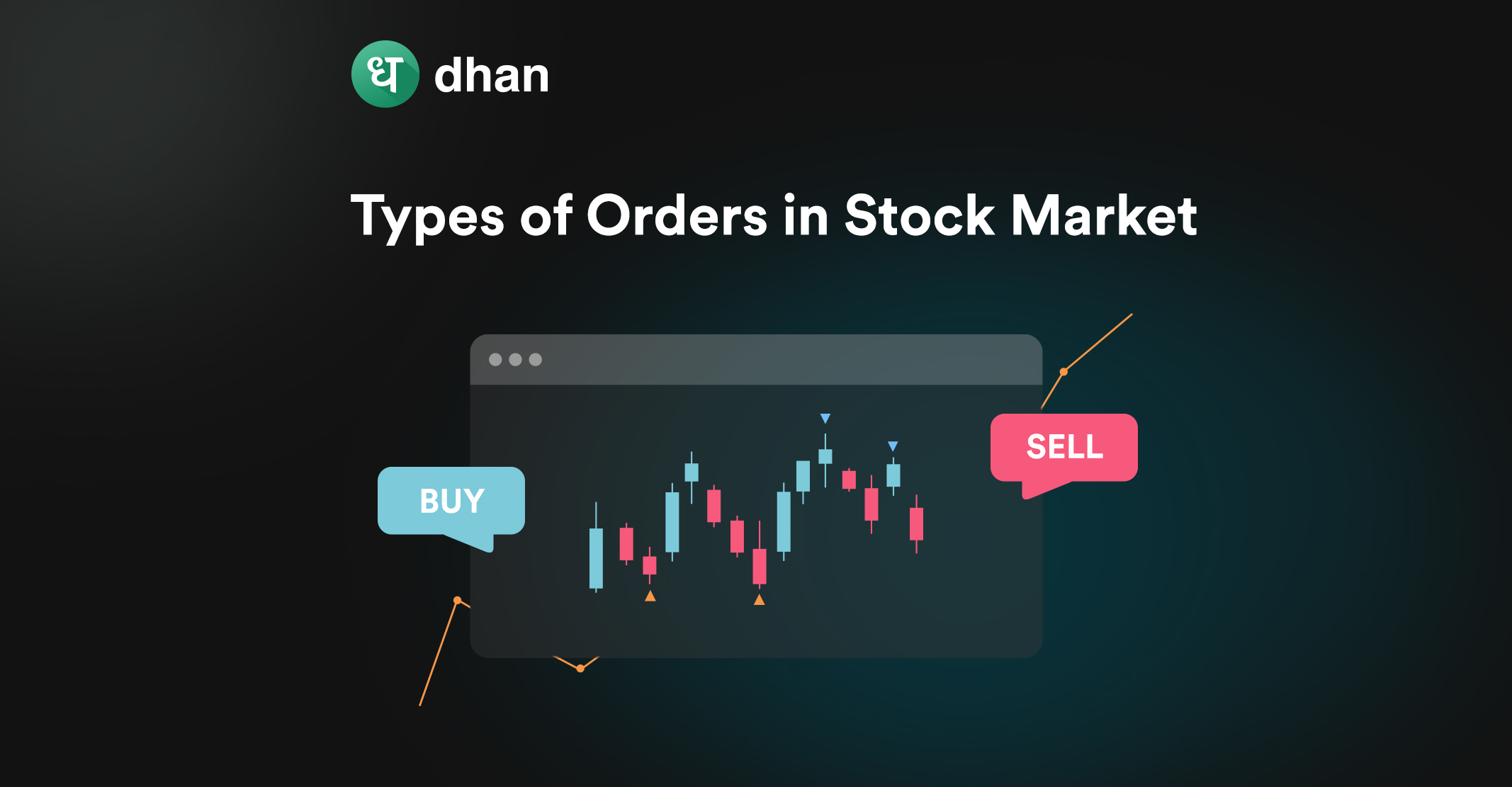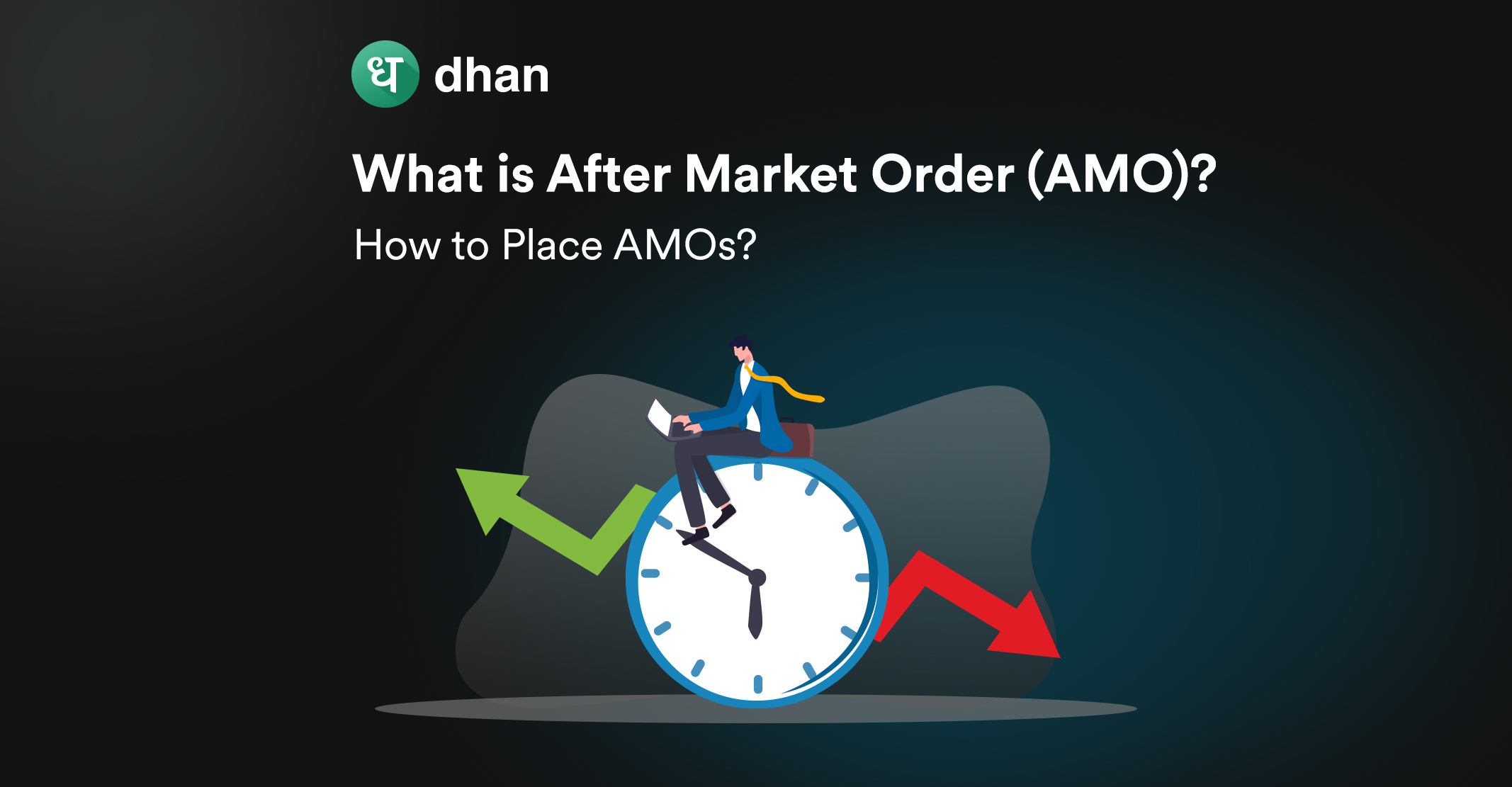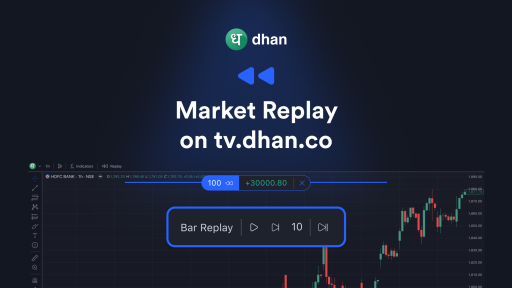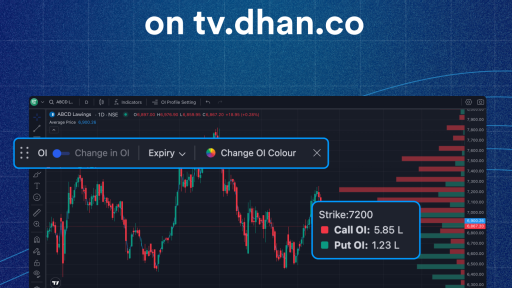Trading and investing in the stock market is becoming increasingly accessible for the common man. As a result, there’s been a growth in the number of new people entering the market.
These new traders and investors struggle with one thing in particular – selecting the right order type based on their stock market goal. This article discusses the different types of orders in stock market and how you can use them correctly.
What is a Stock Market Order?
An order in the stock market is an instruction given by a trader or investor to their broker to buy or sell certain quantities of financial securities like shares at a specific price, time, and date.
These orders range from simple to complex and depend on the goal of the individual placing the order. In fact, there are multiple order types, each with its own characteristics, strengths, and weaknesses.
Landing on a trading app and seeing so many different types of orders can be overwhelming. That’s why you need to understand exactly which order type to use for each scenario.
Types of Stock Market Orders
There are different types of orders in stock market that you can use in different market scenarios for profits, leverage, and risk mitigation.
1. Margin Intraday Square Off Order (MIS)
MIS is an order used to buy and sell stocks within the same day with leverage from the broker.
Your MIS position needs to be squared off (closed) before the market closes for the day.
If you forget to close it, your broker will do it for you via the “auto square-off” facility. This may carry extra charges.
The goal of selecting the MIS order type is to benefit from short-term fluctuations often relied upon by scalpers and classic day traders.
- Used For: Intraday Trading
- Suitable For: Intraday Traders
- Advantages: Leverage for short-term trading
- Disadvantages: Automatic square-off may result in extra charges
MIS orders prevent securities from being held in your demat account as positions are not carried forward overnight.
2. Delivery Orders
In the stock market, “delivery” means the handing over of shares from a buyer’s demat to a seller’s demat (or vice versa).
Placing a delivery order thus instructs your broker to transfer shares in or out of your demat account depending on your position.
A “buy” delivery position is carried forward overnight, and the shares are delivered to you after settlement (T+1 days).
You may be able to tell that this order type is used primarily by those with a medium to long-term view. Think of people like investors, swing traders, positional traders, and such.
- Used For: Investing/Swing Trading
- Suitable For: Investors, Swing Traders, Positional Traders
- Advantages: Potential long-term gains, MTF, no time pressure to sell
- Disadvantages: Overnight risk, longer exposure to volatility
There may be a fee attached to both buy and sell delivery orders, but Dhan does not charge any brokerage fee for any delivery trade.
3. Market Orders
Market orders are one of the popular types of orders in the stock market. You can use this order when you want to buy or sell a security at the market price.
The market price is the current price at which a security is trading in the stock market. It is a product of supply and demand.
While a market order will guarantee quick execution, it will not guarantee the exact price at which the trade will be filled. That, ultimately, depends on the prevailing market conditions and volatility.
- Used For: Quick execution when price is critical
- Suitable For: Anyone who wants speed over precision
- Advantages: Swift order execution, quick position entry/exit
- Disadvantages: Lack of price control
Potential slippage, which happens when the actual execution price varies significantly from the intended execution price, due to market orders may not really impact persons with a long-term view.
4. Limit Orders
A limit order is an instruction to buy or sell a security at a specific price (or better), whenever the said price is reached.
While limit orders ensure control over price, they do not guarantee execution at that price.
The actual execution depends on market conditions reaching or going beyond the price you specify.
- Used For: Precision in entry and exit points
- Suitable For: Those with a focus on a specific price
- Advantages: Price control, strategic entry/exit
- Disadvantages: No guarantee of execution
Slippage won’t really be an issue with limit orders and your entry and exit points will be much more precise, but there is no guarantee of execution.
That said, setting a limit order is a form of trading automation and you won’t have to constantly monitor the markets.
5. Stop Orders
A stop order is an instruction to buy/sell a security when it reaches a specific price. The order is triggered automatically when the desired price is reached.
Once the stop price is reached, the stop order gets converted into a market or limit order before getting executed.
Using a stop order helps you manage risk, safeguard profit, and cut losses, regardless of whether you’re a trader or investor.
- Used For: Managing risk and automating trades
- Suitable For: Those who want to limit losses or enter/exit at predetermined price points
- Advantages: Risk management, trading automation
- Disadvantages: Slippage, no price guarantee
Stop orders do lead to slippages in case they are converted to market orders on execution. Furthermore, these orders should not be confused with “Stop Loss” or “Trailing Stop Loss”.
Types of Special Orders in the Stock Market
There are also several kinds of special orders in the stock market.
1. After Market Orders (AMO)
An AMO helps you place an order after the market closes. The order is triggered when the market starts the next day.
AMOs allow you to react to earnings calls or events that happen outside of market hours by placing orders for the next trading day.
2. Bracket Orders
A bracket order consists of 3 individual orders:
- Buy/sell order
- Target order
- Stop-loss order
Bracket orders also help to automate buy/sell transactions and book profits. However, Bracket orders only have a time horizon of a single day.
3. Cover Orders
A cover order combines a market order and a stop-loss order. Here, a buy or sell order is a market order.
You can also specify the Stop-Loss Trigger Point (STLP) and the limit price to reduce the risk exposure. It offers leverage and risk minimization.
4. Forever Orders
A forever order allows you to place a trade which will be executed only when the predefined conditions are met.
The order stays good until triggered, i.e., no time duration is involved.
5. Iceberg Orders
An iceberg order divides orders of large quantities into smaller slices or legs. Each leg is sent to the exchange only after the previous one is executed.
While iceberg orders are one of the most popular types of orders for institutional investors, they are also used by retail traders to conceal large orders.
6. Stop-Limit Orders
A stop-limit order is a kind of stop-loss order that gets converted into a market order once the trigger price is attained.
As soon as the specific price is reached, the buy/sell order becomes active. It helps in curtailing losses while benefiting from current market trends.
7. Trailing Stop Orders
You can set a maximum value or percentage of loss you can afford to incur in a trade order under a Trailing stop-loss order.
The trigger price jumps at the predetermined percentage when the stock price rises or falls.
When to Use Different Types of Orders?
Where and when to use an order type solely depends on your individual preferences, goals, and risk levels.
For example, market orders can help you benefit from market opportunities but it comes with the risk of high volatility.
On the other hand, limit orders reduce the risk, but the order may fail if the price doesn’t reach that level. This means you can miss out on an opportunity,
The following table shows when to use which stock order type.
| Order Type | When to Use |
| MIS Orders | Quick intraday trading |
| Delivery Orders | Medium to long-term investments |
| Market Orders | Speed over price precision |
| Limit Orders | Control entry/exit prices precisely |
| Stop Orders | Manage risk and automate trades at set prices |
| After Market Orders | Place orders after market hours for the next trading day |
| Cover Orders | Combine market orders with stop-loss triggers for intraday trading |
| Bracket Orders | Automate trades and set profit/stop-loss orders within a single trading day |
| Forever Orders | Active until predefined conditions are met |
| Iceberg Orders | Split large orders into smaller ones to reduce market impact |
| Stop-Limit Orders | Manage losses and participate in market trends by converting to a market order when the trigger price is reached |
Conclusion
There are several different types of orders you can use in the stock market. Each order type is built to achieve a specific goal. These goals depend on you, and so do the order types you choose.
Broadly speaking, there are 5 main types of orders in the share market that are as follows:
- MIS Orders: Quick trading within the day
- Delivery Orders: Suitable for longer-term investments
- Market Orders: Emphasize speed, not price precision
- Limit Orders: Precise control of entry and exit prices
- Stop Orders: Automate trades and manage risk
We’ve compiled a list of resources that you can use to acquire more knowledge about stock trading and investing:



